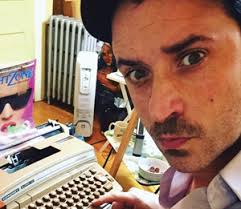When the act of writing stops being fulfilling, it’s okay to stop doing it for a while.
Hard work, discipline, and the grueling ups and downs of submission and rejection are part of the game. Writing is difficult, and that’s fine, but writing should also be a fun addition to the rest of your life. Your bills are paid, your house is in order, and the hours you put in drafting and editing fulfill you in the way any hobby should. Writing shouldn’t be your whole life.
In my last post, I spoke about wasting years of my life worried about my legacy. A different side of that dice is the fact that, cliche of all cliches, a writing career is a marathon run, not a sprint.
Facebook and Twitter have created an atmosphere that inundates fiction writers with constant stimulation. Much of it is positive on the surface: how-tos, ease of access to writers we admire, submission calls, marketing tips, what have you. I have benefited from these things in many ways. However, I also experience an enormous sense of not being successful enough, not being successful fast enough, or not writing or selling myself in the correct ways (per the latest Internet author marketing standards).
You may have felt this scrolling through your newsfeed. Updates of others celebrating publications in magazines; authors promoting their latest book, which seems like it took a few weeks to write; a dozen blog posts you must read about craft; advertisements hocking courses that promise to make you as good as *insert biggies in your genre*. Of course, you’re happy for them even if envious. But you also might wonder if your kayak can hack it on the white water rapid they’re on, seasoned experts navigating their way with ease.
What I’ve learned from meeting many of these “seasoned expert” writers, in whatever genre/circles, is that they’ve been at it for decades. Inundated by these constant digital reminders of our shortcomings, we lack the perspective to see their excruciating years of failures, their learning curves, and moments when they were inconsolable because no matter how hard they worked they felt like impostors, or worse, invisible.
The point of this post is not to stick it out. That horse has been mutilated plenty. I want to talk about pacing yourself, about putting your life first.
I had my first child recently. A lovely little cherub we call Isabel. She breathed new light into my life, but also, much to my surprise, re-oriented my priorities. I realized that for a longer time than I’m proud of, I’ve treated writing fiction like a second full-time job and then some. I’ve been damn close to paying no mind to anything but writing fiction when I wasn’t at the prison working my “day job.” I don’t regret the exponential growth, the time I’ve put into my learning curve, or the joy experienced when several editors said yes. But I do regret the enormous pressure I’ve put on myself to compete with those seasoned kayakers.
I worked so hard, and driving myself mad with anxiety and depression trying to wade into waters I just wasn’t–or may never be–ready for. In doing so, I neglected my adult responsibilities. I interacted with my wife in a constant state of bitterness and inadequacy. When I could have been taking better care of my mental and physical health, I became more depressed, drank, and gained fifty pounds in a couple years. When I could’ve have been saving and managing money better, in order to pay off the overwhelming amount of student loan debt I’m in, I coasted in survival mode; buying take-out even though I’m a good cook, letting interest payments pile up…
When I held Isabel, watched her looking up at me with brand new eyes, I realized all that “normal” for me was anything but. My work ethic is admirable, yeah. But letting my life remain in shambles around me is far from. The starving, mad artist shtick, viewed nakedly for what it was in that moment, with a dependent human life in my hands, seemed ridiculous. I had new perspective on my life, and suddenly being good enough at writing fiction to publish it seemed like the last thing a person should place in the center of their world. I had to become happy; I had to get back in fighting shape; I had to pay off debts, and manage my financial life smarter. For me, for Isabel, for my wife.
Some reading this might think this is the song a man sings when his dreams die. Maybe that will turn out true. I don’t know. All I do know is that writing fiction stopped fulfilling me, so I stopped for a while. Moving forward, it will be less of an obsession for me, given much less immediacy. I will view it as a lifelong process and, like I said in my last post, open myself to other writing avenues and means of self-expression.
Priorities change, and that’s okay. Take care of yourselves. Trust me, if your priorities want to change and you don’t let them, you’re setting yourself up for depression and self-hatred.
 Josh Malerman made a number of technical writing craft decisions in this novel that we can learn from.
Josh Malerman made a number of technical writing craft decisions in this novel that we can learn from.
